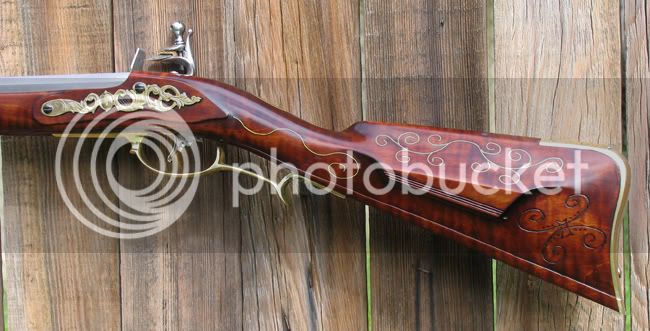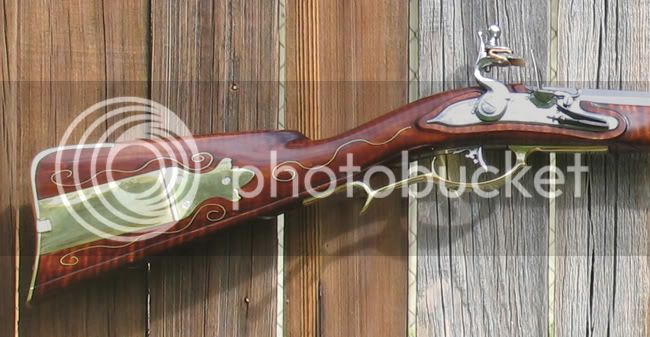As some of you long time members know, I built a "transitional" gun using a .54 cal Colrain swamped barrel which I screwed up.
The damage required removing 5 1/2 inches from the muzzle making a rather short gun.
I decided to pattern it after a 1755 era gun using a French Type C fusil lock (Davis), Type C fusil Pipes and side plate.
The rear sight is a brass Fancy Jaeger (TOTW). The buttplate is a rather plain early style.
Because the barrel is only about 1/8 inch thick at the muzzle, I choose not to dovetail in the front sight. It is soldered in place.
The lock and barrel are left in the white (with a bit of polishing on the lock).
The completed gun weighs a whoppen 6 3/4 pounds.
The finish is hand rubbed True-Oil.




For those interested, I added a part 2 to the Photo Forum.
The damage required removing 5 1/2 inches from the muzzle making a rather short gun.
I decided to pattern it after a 1755 era gun using a French Type C fusil lock (Davis), Type C fusil Pipes and side plate.
The rear sight is a brass Fancy Jaeger (TOTW). The buttplate is a rather plain early style.
Because the barrel is only about 1/8 inch thick at the muzzle, I choose not to dovetail in the front sight. It is soldered in place.
The lock and barrel are left in the white (with a bit of polishing on the lock).
The completed gun weighs a whoppen 6 3/4 pounds.
The finish is hand rubbed True-Oil.




For those interested, I added a part 2 to the Photo Forum.




